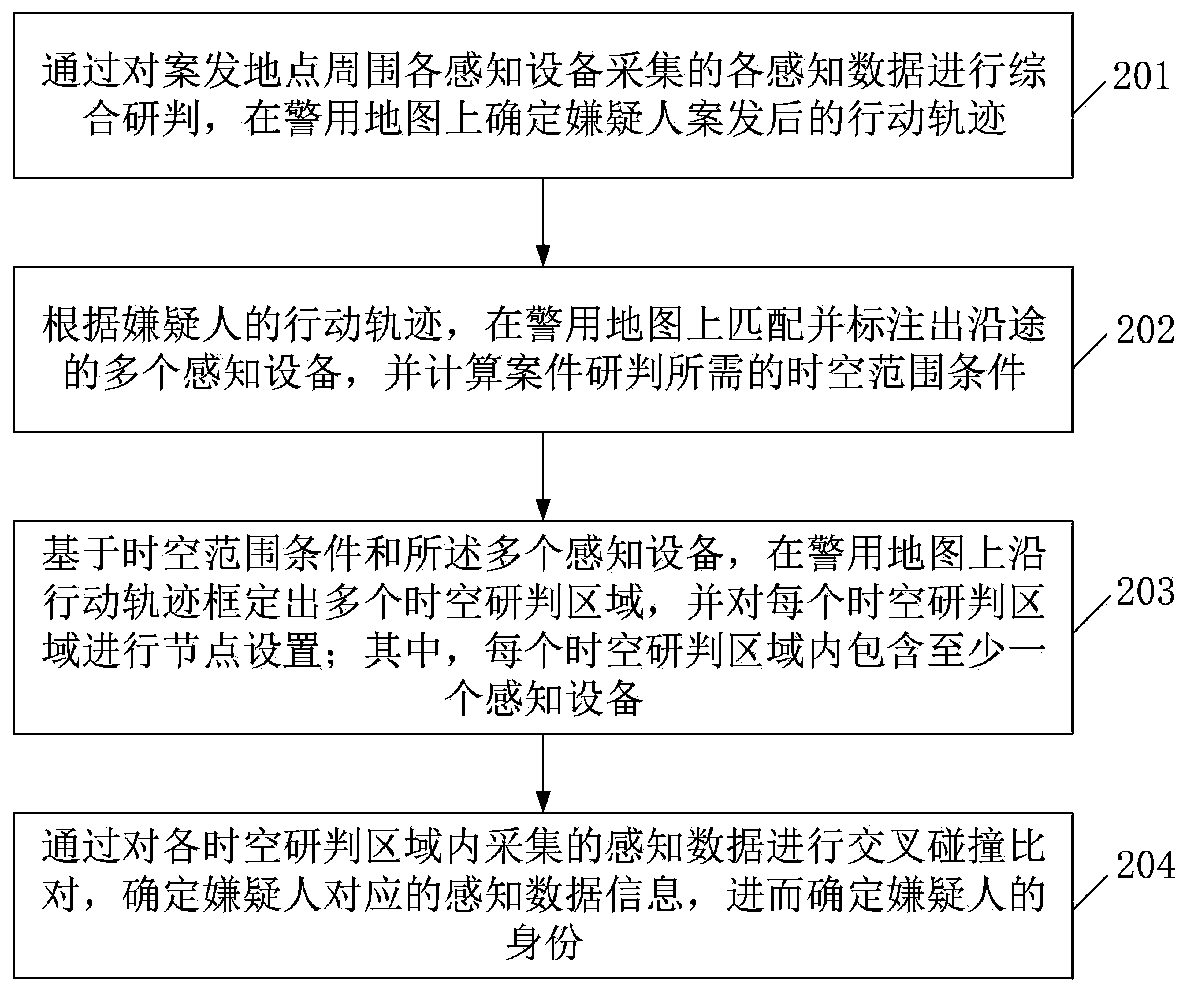Perceptual data analysis method and device for determining suspects
A technology of perceptual data and analysis methods, applied in the field of perceptual data analysis to determine suspects, can solve problems such as multi-time and police force, efficiency and accuracy impact, etc., to achieve the effect of improving efficiency and accuracy, and accurate investigation
- Summary
- Abstract
- Description
- Claims
- Application Information
AI Technical Summary
Problems solved by technology
Method used
Image
Examples
Embodiment 1
[0067] The embodiment of the present invention provides a sensory data analysis method for determining a suspect, which can help police personnel quickly determine the identity of the suspect after a crime occurs, and is conducive to the tracking and arrest of the suspect. Such as figure 1 As shown, the perception data analysis method provided by the embodiment of the present invention specifically includes:
[0068] Step 201, by comprehensively studying and judging the sensing data collected by the sensing devices around the crime scene, the suspect's action track after the crime is determined on the police map.
[0069] The present invention performs tracking analysis based on the police map, and the point information of various sensing devices within the involved range can be displayed on the police map. Wherein, the sensing device includes a camera and / or an electronic fence, and the camera includes one or more of a portrait camera, a video camera, and a vehicle camera, a...
Embodiment 2
[0112] As mentioned in the above-mentioned embodiments, the identity of the suspect can be determined by sensing data information, that is, using any one or any of portrait data (acquired by camera), vehicle data (acquired by camera) and electronic fence data (acquired by electronic fence). Two or all three to analyze and determine the identity of the suspect. Generally speaking, it is relatively easy to determine the identity of the suspect through all three sensory data, but it may be difficult to determine the identity of the suspect through any two of the sensory data, especially if only When obtaining a piece of sensory data, it is relatively difficult to determine the identity of the suspect.
[0113] In the actual business of the public security, because many suspects have certain anti-reconnaissance capabilities, they may use various methods to avoid being discovered or identified by the public security organs when committing crimes. For example, when some suspects us...
Embodiment 3
[0129] In Embodiment 1, the action trajectory of the suspect after the crime is determined by comprehensively studying and judging the sensing data collected by the sensing devices around the crime scene (ie step 201). When determining according to the perception data collected by cameras along the way, the image features of the suspect need to be determined first (refer to step 2011 for details). It is not clear, and there are no eyewitnesses to provide corresponding information, or due to the crowds, the camera cannot directly lock the perpetrators. At this time, it is difficult to directly obtain the suspect's movement track through the camera.
[0130] Considering that most people carry mobile phones with them when they go out, and the mobile trajectory of the mobile phone can be tracked and detected by the electronic fence device, therefore, in the case that it is difficult to directly obtain the image features of the suspect, the embodiment of the present invention can be...
PUM
 Login to View More
Login to View More Abstract
Description
Claims
Application Information
 Login to View More
Login to View More - Generate Ideas
- Intellectual Property
- Life Sciences
- Materials
- Tech Scout
- Unparalleled Data Quality
- Higher Quality Content
- 60% Fewer Hallucinations
Browse by: Latest US Patents, China's latest patents, Technical Efficacy Thesaurus, Application Domain, Technology Topic, Popular Technical Reports.
© 2025 PatSnap. All rights reserved.Legal|Privacy policy|Modern Slavery Act Transparency Statement|Sitemap|About US| Contact US: help@patsnap.com



